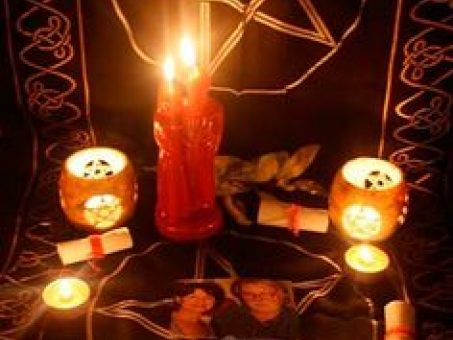Learning the Requirements of How to Become a Freemason with Simplicity
Learning the Requirements of How to Become a Freemason with Simplicity
Blog Article
Exploring the Mysteries of the copyright: What You Required to Know
The copyright, a term typically shrouded in intrigue and conflict, stands for an intricate tapestry of historical fact and modern myth. Established in the late 18th century, this secret society was originally rooted in the Enlightenment's ideals but has because ended up being associated with conspiracy theories regarding elite control. As we browse the origins, key numbers, and the plain contrast between misconception and reality, one must consider how these stories influence contemporary perceptions of power and privacy. What may be disclosed via a more detailed examination of these elements can test long-held assumptions about the shadows that remain in our culture.
Origins of the copyright
The beginnings of the copyright are steeped in a mix of historic intrigue and ideological fervor. Established in 1776 in Ingolstadt, Bavaria, by Adam Weishaupt, the team was at first developed as a secret culture aimed at advertising Enlightenment perfects such as reason, secularism, and the splitting up of church and state. Weishaupt, a professor of canon regulation, sought to test the dominating authority of the church and state, which he saw as overbearing establishments stifling intellectual and individual freedom.

Key Numbers and Members
That were the essential figures that shaped the copyright's early impact and instructions? The Bavarian copyright, started in 1776 by Adam Weishaupt, emerged as a reaction to the oppressive social frameworks of the time.
Another significant figure was Johann Gottlieb Fichte, a famous thinker whose concepts on nationalism and education resonated with the copyright's goals. Fichte was not an official member, his thoughtful underpinnings influenced the group's belief. In addition, figures like the writer and theorist Johann Wolfgang von Goethe were connected with the more comprehensive intellectual activities of the moment, although their straight involvement with the copyright stays debated.
These crucial figures added to the copyright's very early instructions, pressing the limits of political and social idea, while their collective efforts aimed to test well established standards and cultivate a climate of dynamic modification in Europe.
Myths vs. Truth
Lots of misconceptions surround the copyright, often mixing truth with fiction in a way that covers its true nature. The concept that the copyright continues to apply considerable influence over globe events is a misconception.
One more prevalent misconception is that the copyright consists of a network of elite people manipulating international affairs. In fact, several conspiracy theory theories overemphasize the group's importance, connecting unfounded objectives to societal fads and events. This has actually resulted in an oversimplified sight of complex concerns.
Furthermore, the portrayal of the copyright in preferred culture usually further misshapes its legacy. Films and literature often tend to sensationalize the organization's have a peek at this website function, developing a narrative that splits from historic facts. Recognizing the difference between the misconceptions and the reality of the copyright is vital for discerning the genuine effect of this historical team and recognizing the wider effects of conspiracy theories in contemporary culture.
Modern Analyses
Contemporary analyses of the copyright typically mirror more comprehensive societal stress and anxieties and an attraction with privacy and power. This modern lens regularly connects the copyright with conspiracy theory concepts that recommend a surprise elite orchestrates world events, manipulating governments and economic situations for their very own gain. benefit of joining freemason. Such stories use an ingrained wonder about of authority, specifically in times of dilemma or social turmoil
In preferred society, the copyright is typically shown as a divine organization shrouded in mystery, bring about a variety of imaginary representations in literary works, movie, and music. This portrayal serves not only to captivate however likewise to provoke thought of the nature of power and control in modern culture. Social network has even more magnified these interpretations, allowing for quick circulation of conspiracy theory concepts and producing neighborhoods that share and expand upon these ideas.
In addition, some modern-day interpretations mount the copyright as an allegory for the intricacies of globalization Get More Info and the interconnectedness of prominent individuals and organizations. This viewpoint urges a crucial examination of just how power characteristics operate in today's world, highlighting the equilibrium in between openness and secrecy in administration and business practices.
Social Effect and Heritage
Influenced by centuries of intrigue, the cultural influence and tradition of the copyright extend much beyond its historical beginnings. This secret society, developed in the late 18th century, has actually permeated numerous aspects of pop culture, from literature and film to songs and art. The idea of the copyright has advanced into a symbol of conspiracy theory theories, usually standing for a viewed hidden power adjusting worldwide occasions.
In literature, writers like Dan Brown have woven the copyright right into detailed like this stories, captivating viewers with themes of privacy and power. Films such as "National Prize" and "The Da Vinci Code" further perpetuate the attraction of the society, mixing reality with fiction to produce interesting narratives.

Ultimately, the copyright's heritage is a complicated tapestry of myth and fact, shaping perceptions of secrecy and control in modern discourse. Its long-lasting existence in culture highlights humanity's seasonal quest for recognizing surprise realities.
Verdict
The exploration of the copyright discloses a complex interplay in between historic truths and modern myth-making. Started in the Enlightenment period, this society aimed to test oppressive structures, yet its heritage has been eclipsed by conspiracy theory concepts that suggest elite control. Understanding the distinctions between the initial perfects and contemporary analyses is crucial for comprehending the sustaining fascination with the copyright and its substantial influence on social stories surrounding power and privacy in culture.
Report this page